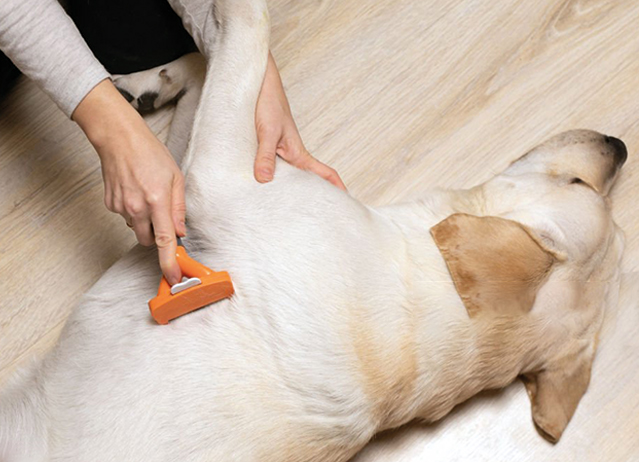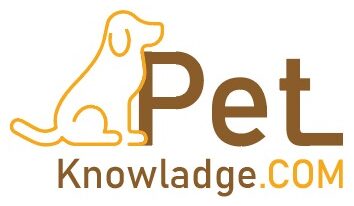Dog de-shedding is a challenge many dog owners are well already aware of. Shedding is natural, but it’s quite a handful because it leaves your house full of fur, creating frustration on your part. To keep your home clean and maintain a healthy coat for your dog, you have to learn how to de-shed your dog properly at home.
In this review, we are going to discuss the advantages of regular dog de-shedding, and afterward, we are going to give you all the tools you’ll need and a step-by-step guide to keeping that shedding at bay in your dog. A good approach minimizes the mess and enhances the health and appearance of your dog.
Benefits of Dog De-Shedding
But before you engage the pet in the dog de-shedding process, a little detail should be known about the advantages that this grooming will bring to your pet and you:
- Excess hair Reduction: The de-shedding done regularly can minimize the amount of fur on your furniture, clothes, and floors.
- Prevention of Mats and Tangles: Mats and tangles will be prevented by de-shedding, which may also be very painful to the dog, and mats and tangles sometimes become a cause of infections from the skin.
- They enhance the health of your coat and skin: Grooming increases the production of natural oils that give your coat a shiny and healthy look.
- They reduce allergies caused by shedding: Grooming reduces the amount of loose fur and dander in your house and helps to alleviate people who have allergies.
- They create bonding: Grooming provides a great avenue to bond with your dog, making them feel loved and comfortable.
Now that it has been established why dog de-shedding is crucial, it would be time to discuss some of the tools and techniques that can help you do it at home.

Tools You’ll Need for Dog De-Shedding
The right tools will serve you right to work well on your dog when de-shedding. Sometimes, some tools work better on a given coat type rather than others. Here are a few of the must-have grooming tools that you may find useful:
- Slicker brush: This is ideal for removing loose fur from most dog breeds. Fine bristles in this sort of brush will help detangle and remove shedding hair without causing discomfort to your pet.
- Undercoat rake: This is for double-coated breeds. It penetrates deep into the undercoat to pull out loose hair without getting at the topcoat.
- De-shedding tool: Specialised rakes like the FURminator are an excellent way of removing dead hair on the undercoat, plus on the topcoat, good for heavy shedders like Labradors and Huskies.
- Bristle brush: This suits for those breeds that have short hair. It helps in removing loose hair from the outer layer while distributing natural oils to the skin.
- Grooming gloves: These make grooming a piece of cake. Gentle massages on your dog’s skin along with loose hair removal can be done using these gloves. They may be great for those dogs that are just not able to tolerate bristles.
- High-velocity dryer: A good high-velocity dryer blows all the loose fur off after a bath, and your dog probably can handle that. The double-coated breed finds this extremely helpful.
Steps to De-Shed Your Dog at Home
Read on for your step-by-step guide and how to de-shed your dog in the comfort of your own home without annoying or fidgeting the pet through the process.
Step 1: Prepare Your Dog for Grooming
Before de-shed dog, a dog must be made comfortable. Look for a quiet, non-calm area of grooming and if necessary, offer a treat or a toy to keep them relaxed. If it is the first time your dog has been groomed, then start with small processes and gradually introduce the tools involved.
Brush your dog’s coat lightly by hand, then brush them with the tools to find mats, tangles, and sensitive areas that may require particular attention.
Step 2: Choosing The Right Tool Based On Your Dog’s Coat
Selecting the right brush is a good first move depending on the type of coat of your dog:
Short hair dogs should use a bristle brush or even grooming gloves when brushing off dead loose hairs on top.
Long-haired or double-coated dogs: You’ll need an undercoat rake or a slicker brush that removes the undercoat and topcoat fur.
Brush your dog with the grain. Brush long-haired dogs with gentle, firm strokes. Long-haired breeds require attention in areas where matting occurs: ears, beside the legs, and so on.
Step 3: Applying the De-Shedding Tool
After brushing, use a de-shed dog tool such as a FURminator to take off loose fur. The FURminator is great at helping reduce shedding. It gets deep down into the undercoat without disturbing the skin.
Gently pull the tool through your dog’s coat, section by section, and avoid pressing too hard, as this irritates. Make sure that you give extra attention to areas where shedding tends to be heavier, namely at the back, the sides, and the hindquarters.
Step 4: Bathing Your Dog
Bathe your dog for easy and ready facilitation for the shaking off of fur and reduction in shedding. Employ the same dog de-shedding shampoo and conditioner that promotes a healthy, good scalp and coat. Some of its ingredients contain Omega-3 and Omega-6 fatty acids, which are said to reduce shedding and improve a dog’s coat overall.
Dry your dog using a high-speed dryer, if one is available. This is the best time to blow the loose fur away from your dog’s skin. If your dog is very fussy about the dryer, let him dry normally or pat him dry with a towel.
Step 5: Repeat the Brushing Process
Once your dog is thoroughly dry, brush them again to remove the loose hair. It will result in a much smoother coat for your dog with no tangling and shedding less hair around the house.

De-Shedding Tips for Different Dog Breeds
Here are the best Dog De-shedding tips for different dog breeds:
- Double-coated breeds: Examples of double-coated breeds include Huskies, German Shepherds, and Golden Retrievers. They require constant grooming to dislodge loose undercoat hairs. Use an undercoat rake and de-shedding tool periodically to keep their shedding at bay.
- Short-haired breeds: The boxers, beagles, and bulldogs shed less; however using a bristle brush once every week keeps the coat shining with minimal shedding.
- Long-haired breeds: Daily brushing, a slicker brush, is recommended for long-haired breeds like a Collie, Poodle, or Yorkshire Terrier. Otherwise, matting and shedding may arise.
Additional Tips for Managing De-Shed
Here are the top dog de-shedding tips for managing shedding your dog at home:
- Balanced Diet: A good diet is rich in Omega-3 and Omega-6 fatty acids, which provide healthy coats besides minimized shedding. High-quality dog foods that have the same nutrients should be on your checklist, or supplementing with them could help.
- Hydration: Make sure that your dog is drinking enough water because dehydration leads to dry skin and excessive shedding.
- Regular grooming: Create a particular routine for grooming that will serve the breed and type of coat for your dog. Shedding is an important feature of regular grooming but also makes one have a better and healthier coat. Don’t forget to do the outside area of your house as well, make it sweep and clean with a mower.
- Keep your house clean: Even if you de-shed daily, some fur is going to fall onto the floor. Clean your carpets very regularly and use lint rollers or pet hair removers on your furniture and clothing.
Conclusion:
De-shed your dog at home is not a Herculean task. So long as you apply the right techniques and arm yourself with the right equipment, you will minimize shedding greatly, improve the condition of your dog’s coat, and leave your home even cleaner. Regular grooming, apart from health benefits to your dog, also provides an opportunity to build strength between you and your canine companion. Stick to these dog de-shedding tips to successfully manage shedding in your dog.

